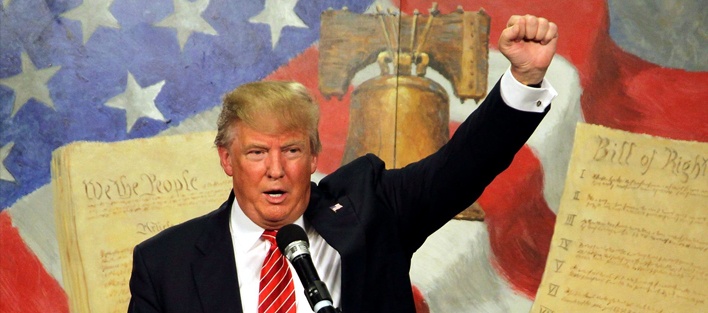
Donald Trump’s response to the terrible shooting in Orlando is exactly what ISIS expected. President Obama is handling it much more adequately. The call for authoritarian leadership is understandable in times of crisis, but that solution is threatening to feed further polarisation.
It is too early to say the attack in Orlando was committed under command of ISIS with certainty, but in reality that no question. ISIS uses the free electron model, a very distinct business model in which sole volunteers sacrifice themselves. They do so in the hope that the parent company takes up responsibility for their actions. In this way, the terrorists do not have to get direct instructions. They decide on their actions after an auto identification process within the bigger ideology of the caliphate against the rest of the world.
Polarisation
In Psyche & Brein magazine, social psychologists Stephen Reicher and Alexander Haslam recently gave a good overlook of how conveniently ISIS applies basic psychological principles to realise their mission. According to researcher Shiraz Maher (King’s College London) ISIS uses a strategy of polarisation. The ISIS-magazine Dabiq for example, came out one and a half year ago with an article titled: ‘The elimination of the grey zone’. The organisation wants all Muslims to see the West as their enemy, and not as the countries of endless possibility. To accomplish this, they want the West to see all Muslims in a bad way, so they can boost radicalisation and extremism, in Muslims as well as non-Muslims.
Donald Trump wasted no time last Sunday to mark the attack in Orlando as an act of ‘radical Islam’ and to repeat his call to shut off the borders to all Muslims. By doing so he extends his following. Several studies actually show that people follow a militant leader much more easily when they are battling another militant group. With these statements Trump therefore helps the terrorists instead of sabotaging them. Based on his earlier statements, ISIS could expect what he would say this time. Moreover, it didn’t take a lot of time for Trump’s earlier statements to be repeated in Al Qaeda propaganda. This is how the provocation-wheel keeps on spinning.
This exchange-process in which hostile politicians in the West help ISIS, but need ISIS at the same time to enlarge their following is what religious expert Douglas Pratt (University of Waikato, New-Zealand) calls ‘co-radicalisation’.
Unifying leadership
In uncertain times it seems to be tempting for many to go back to the authoritarian leadership of which Donald Trump is the emanation. An authoritarian leader gives direction and creates order and safety. However, this model is based on the illusion that direction, order and safety are completely obtainable and realisable in a complex world. Within the concept of connecting leadership, the leader will do anything to avoid further polarisation. Obama and Clinton are stronger at this. After the terrorist attacks they emphasise that everyone has been hit, that it is an attack on universal values. That we have to keep on co-operating and that closing the borders isn’t going to help anyone.
Next to a strong condemnation of the attacks we also have to, after the dust has settled, dare to look at our role in the bigger scheme of things. From social psychology (Saguy & Halperin, 2004) we know that individuals who criticise their own group, gain more sympathy with their so called opponents. Through this the West will open the door to peace more quickly in those countries. This strategy aims at the opposite of co-radicalisation and is the best guarantee to a future with less polarisation, war and hate.
Now that Donald Trump is president of the US we can look back on Obama’s leadership characteristics. Read More!


